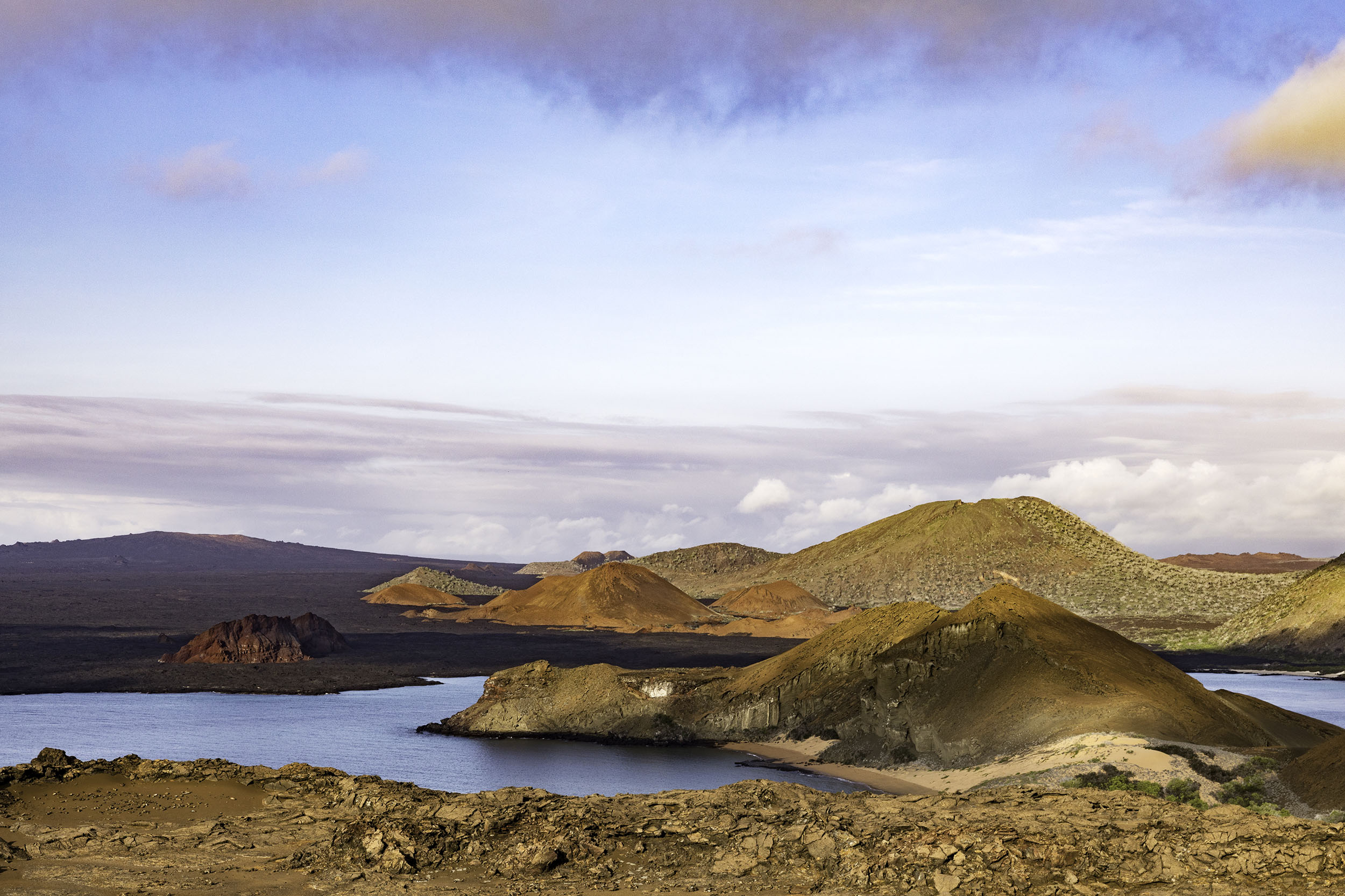Survival in extreme environments hinges on collaboration—not competition.
Imagine, for one second, you’re a beached dolphin dying out in the sun. By some tragic twist of fate, you find yourself on a curb in some southern Californian highway community, burning under a mounting atmospheric heat dome. Exposed, cut off from the surging waves, you face being left high and dry as the thermometer tilts toward 100° F. Getting stuck out here for long would mean dehydration and almost certain death, so imagine your luck when you catch sight of some shade nearby, in the shadow beneath a cluster of towering black seashells. Dragging yourself over the rocky roadside, you find moist ropes of foliage unfurling and water pooled at the shell’s feet—a cove large enough to slide into. This living landscape lovingly wraps you like a wetsuit. Until you find a way back to the ocean, you think you’ll surely be safe here.
This mysterious oasis is no fictional invention but a real-world environment blown up: a zoomed-in view of the seaweed-ringed mussel beds that line the seashore up and down the Pacific coast. Laura Jurgens, a marine ecologist at Texas A&M University, explains that this type of perspective shift is one of the best ways to understand the strange brutality of life in a seaside environment we might easily overlook or disregard as blandly picturesque. Jurgens’ research subjects are not in fact dolphins, she explains, but Petrolisthes cinctipes: a type of porcelain crab, about the size of a thumbnail, with a burly pair of boxers’ claws that guard its frog-like face. But this fable drives home a crucial point. “We can’t just chuck a dolphin up onto blacktop for six hours and expect it to do okay,” she says. Yet, each day during long low-tide exposures, “this is what happens to these tiny, tiny animals that have much less body-water to lose, right? So their challenge is really to stay hydrated. And to not overheat, or to freeze.”
In a coastal range that runs from Santa Barbara up north past Vancouver Island, these biologically formed “biogenic” habitats are refuges for porcelain crabs: The shells of mussels are beach huts big enough to climb inside. Clustered together, they pool water, while slick red-brown alga swish around like an insurgent rainforest. In Jurgens’ tests, these makeshift mollusk microcosms proved to be the difference between life and death. The surrounding bare rock registered summer temperatures of 46.5°C, dramatically surpassing the threshold where crabs would desiccate and die. Yet within the biogenic fold, the temperature never once passed this lethal limit, and it is not predicted to do so even under the worst-case forecast warming in the year 2100. Octopi, isopods, even gill-breathing fish can be found sheltering at low tide among up to 600 inhabitant species.
“Things that would normally dry out in a hot second if they were exposed are hiding in these special biologically formed habitats,” says Jurgens.
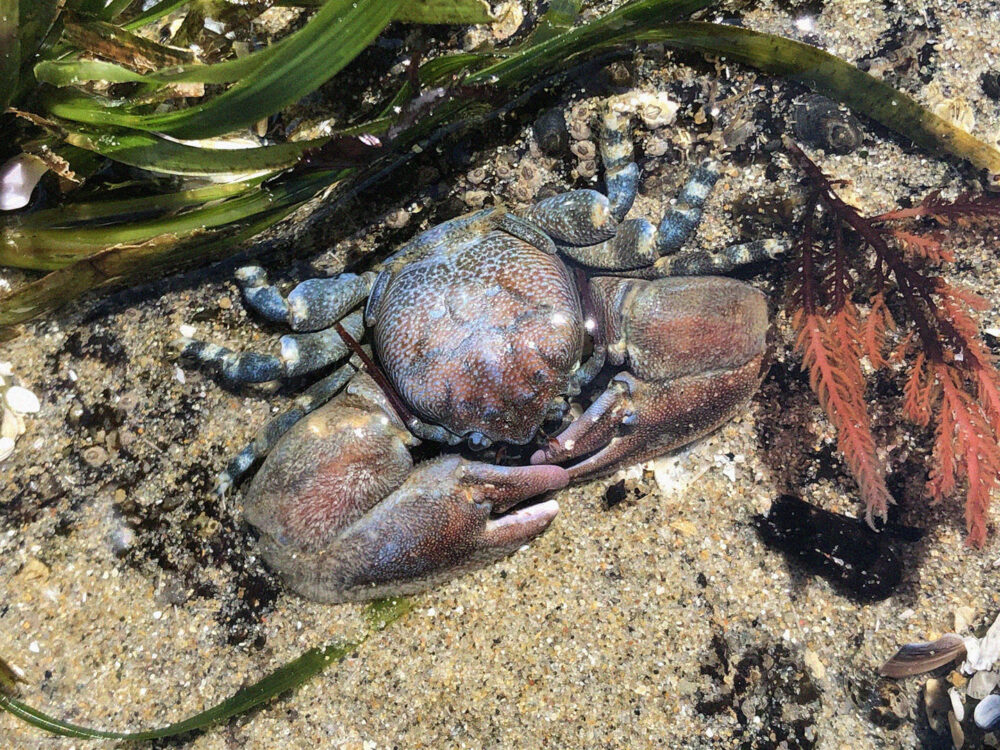
A tangled bank, teeming with life
Like a desert’s dunes or the heights of a mountain range, rocky shores are hammered by unforgiving stressors, from seasonal winds to ever-present waves, and from occasional frosts to constant sun bakes. Imagining ourselves in such settings can give some sense of the responses we might make, and the paths evolution might take in unforgiving environments. First and foremost, says Jurgens, we see how survival in this place looks very different from the Darwinian competition we were taught in high school textbooks, of crabs and their rivals locked head-to-head in a battle for survival, “nature, red in tooth and claw.” Here, at low tide, we see not a gladiatorial arena but a place where daily life is made possible by one life form unlocking paths for another’s survival.
“Positive interactions are really fundamentally the organizing principle of life.”
Today, ecological theory has undergone a quiet revolution from the time when visions of predation and competition ruled supreme. After more than a century in which these zero-sum negative interactions were understood to be the ultimate driving force in nature, we now know that in many hardscrabble places, the role competition plays in survival is far less significant than other forces: ones which involve notions of collaboration, exchange, and mutualism. Though competition remains a critical force guiding survival on a changing planet, we now understand that “positive interactions are really fundamentally the organizing principle of life,” says Jurgens.
Public awareness of the symbiotic relationships of species that exist inside ourselves has led to new health-enhancing ways to harness the microbiomes of our guts, mouths, sex organs, and skin—and such thinking can apply equally to the ecosystems we form with other species. “Over half of our cells are microbes that are mutualist,” says Mark Bertness, a professor emeritus of evolutionary biology at Brown University. “This is the same as it is within a forest or in a salt marsh,” where plants that structure this environment rely on communities of pollinators, seed dispersers, and mycorrhizal fungi. Even predators help keep herbivores in check and forest-dwelling humans can promote forest health by sustainably clearing, logging, and burning forests.
More than just an academic breakthrough, this new way of thinking could be critical to addressing one of the great crises of our time: our “last chance” to restore the planet’s collapsing ecosystems, in the words of biodiversity chiefs at the United Nation’s COP15 conference in Montreal last December. As countries worldwide make unprecedented pledges on biodiversity, a raft of experimental initiatives promise to overhaul how nature restoration is practiced by harnessing the flip side of Darwinian competition. Recruiting bats to rewild rainforests and clams to regrow seagrasses, these projects are learning from symbiotic organisms to draw blueprints for mutualistic swamps, invent ecosystem-sparking artificial whale manure, and design soundscapes for regenerating coral reefs. Together, they foreshadow how human creativity, non-humans’ habitat building, and co-evolutionary forces could together guide the transformation of a planet to become fit for multi-species cohabitation.
Cooperate or die
By forming biogenic habitats, ecosystem engineers like mussels provide a bundle of positive impacts, known to ecologists as facilitation effects, including casting shade and pooling water to create pocket microclimates. But this is not where facilitation ends. Globe-spanning research is painting a picture of the eclectic and far-reaching ways that facilitation effects connect animals, plants, and other species. Physical facilitation like shading is vital, too, in arid systems like the gypsum-soil “ecological deserts” of southern Spain, where the first pioneer shrub to establish itself sets off a positive cascade, providing shade and moisture, as well as nutritious leaf litter, which helps juvenile plants to establish its understory. While many facilitation effects are one-way benefits, researchers showed that young shrubs reciprocally benefit the original “nurse plant” as they grow, with the group together attracting pollinators and seed-dispersing birds and mammals.
Most studies on facilitation have addressed these types of effects: of one free-living plant on the germination and survival of another. But there is an ever-growing body of literature unraveling the mechanics of well-established symbiotic mutualisms, say between clownfish and its anemone habitat, and new discoveries, like the stimulating effect of whales’ fecal plumes on phytoplankton. From alpine highlands to urban wastes, we can observe facilitation effects in action, with different species cycling nutrients, protecting one another against predators, and securing unstable soils or clearing toxic chemicals to allow new plants to grow. “There’s so many positive interactions that we don’t even appreciate now,” adds Jurgens. “We don’t quite understand them. We aren’t even aware that they exist.” We’re increasingly understanding how it works on the very smallest scale, with the cooperation between simple organisms proposed by Lynn Margulis as the origin of all animal and plant life on Earth.
Yet in spite of the motley nature of facilitation effects, we can draw out a clear trend, known as the stress-gradient hypothesis, which is perhaps the most significant conceptual advance made in ecology over the past three decades. Proposed in a 1994 paper, it says that as the levels of stress in an environment increase, positive interactions become more common and negative interactions, like competition, get less frequent. “It’s a simple idea,” explains Brian Silliman, a professor of marine conservation biology at Duke University. “As stress increases in the ecosystem, neighbors are more likely to cooperate than compete—especially when the penalty of not cooperating is death.”
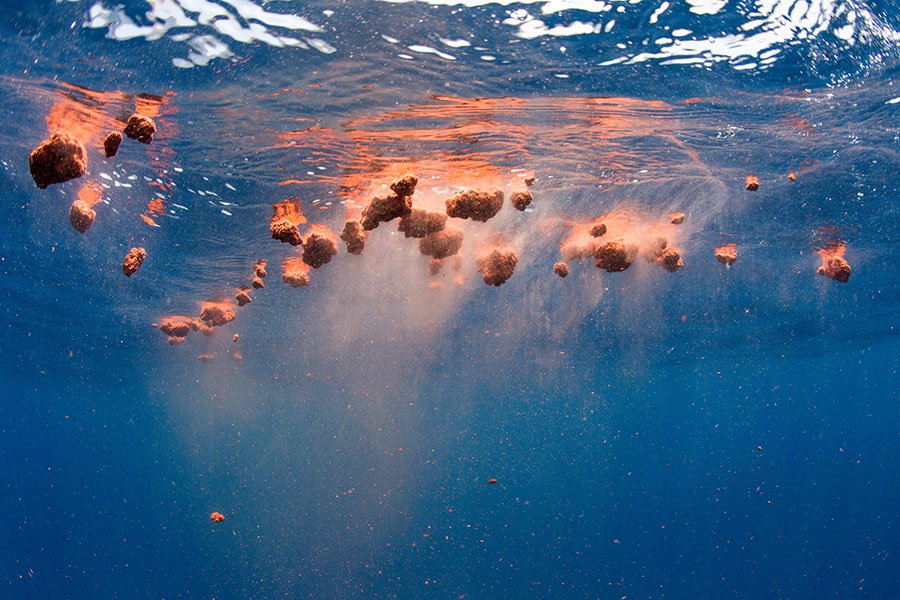
Restoration through cooperation
There are plenty of environments like this—from the Arctic tundra to the Sahara-meets-savannah border regions of the African Sahel—where we intuitively understand that an individual’s chance of surviving is limited more by its environment than by its neighbors. And as landscapes worldwide experience increasing droughts, extreme weather, and global heating, environments are being pushed further up the slope, toward cooperation rather than competition. Land directly degraded by humans can form extreme challenges, as in the toxic artificial micro-desert of a metal mine’s tailings, where plants struggle to recolonize acidic and physically unstable earth, rich in trace elements but parched of water. In studies at Spanish mines, Jose Antonio Navarro Cano from the Spanish Desertification Research Center found that stress-resistant nurse plant shrubs were the first to colonize barren tailings and “develop isles of milder microclimatic conditions” that facilitate the growth beneath their canopy of less stress-tolerant plants.
What does all this mean for the projects that aim to revive degraded ecosystems? Some clues can be taken straightforwardly from research: Trees or shrubs with effective nurse plant traits can be selectively bred to kickstart restoration programs. In toxic environments, Navarro Cano found these plants can create conditions fit for hyperaccumulators, plants that can extract phenomenal quantities of heavy metals from the soils, setting in motion the wider “bioremediation” of the site. Understanding how facilitation works may support a “rewilding” approach, which employs a philosophy of letting nature take its course: providing space for facilitation cascades, along with other natural processes, to play out. Other times, facilitation effects may suggest a more interventionist approach: Spanish moss, orchids, and other rootless “epiphytes” living on trees further enhance animal biodiversity, suggesting that transplanting secondary species like mistletoes into degraded forests could boost ecosystem integrity. “Looking to nature for what has actually worked to enhance communities and build ecosystem structure, we see so many positive interactions,” says Jurgens. “It makes absolute sense to include positive interactions—as much as we can, to the extent that we even know about them—in our restoration plans.”
“We’re biased by our Darwinian view that competition leads to the most efficient design and way forward.”
But getting down to the fundamentals of facilitation can spark more revolutionary insights, starting with the recognition that there are many instances where two plants of the same species growing close together survive better than one alone—something called intraspecific facilitation. Worldwide, this simple truth flies in the face of one of our most wide-reaching practices. Whether in the carrots we plant in a vegetable greenhouse or saplings in the commercial forestry, almost everything grown by humans begins life as a simple pattern of row upon row of evenly spaced plants, based on one basic premise: For best results, minimize competition for light and nutrients between individuals.
Silliman found this pattern is the norm even in salt marshes, mangroves, and oyster reefs, where 96 percent of restoration projects he surveyed were planted evenly spaced out, in a “hair club for men fashion.” These are among the most productive and endangered environments on the planet, as both carbon sinks and lifesaving coastal flood defenses, in addition to valuable ecosystems. But many of these plantation-style projects fail: Less than 10 percent of salt marsh grasses planted survive, Silliman found, as they’re battered by waves and killed off by underwater chemical stressors.
Death rates of 90 percent or more are no rarity in restoration, and some prominent reforestation efforts have seen near-total die-offs—with far greater challenges hampering the return of coral reefs and arid plains. Bertness, the pioneering ecologist who co-proposed the stress gradient hypothesis, says harnessing facilitation effects is a vital step to turning the tide. “I’ve always thought for the last couple of decades that restoration was going to be the true test of ecological theory,” says Bertness. “And it’s working out just as I thought: Without including interdependence of plants and animals and positive feedback, you fail.”

Silliman went against the grain: planting in clustered clumps in experimental plots in the Netherlands and Florida and allowing transplanted marsh seedlings to grow enmeshed in each other’s roots. Anchoring them against wave stress, this redesign also capitalized on the plants’ ability to shunt oxygen from the air to their roots to ward off toxic anoxia in sediments, with oxygen leaking from each plant to help those around it. This simple shift in spatial design doubled the survival and growth of plants, compared to plantation-style planting, despite zero added cost or resource input.
Now, he is looking to take things further, working with data models to optimize planting dispersion for plots of different stress levels. Further experiments in France added another variable, introducing seagrass along with lucinid clams, which have sulfide-consuming gill symbionts that help to clear dangerous toxins from the water. Growth rates jumped again. More studies have followed, supporting flipping the status quo of single-species, plantation-style restoration on its head. “All the studies we’ve done, it’s actually shown that you should do the opposite,” says Silliman. “The presence of a neighbor—for an oyster, or coral or mangrove or salt marsh or seagrass—when they’re regrowing after disturbance actually has a positive, not a negative effect.”
“We’re biased by our Darwinian view that competition leads to the most efficient design and way forward,” Silliman says.
The biggest challenge
Global biodiversity loss has now taken its place alongside climate change as the planet’s twin crises. Even as debate continues about whether we are witnessing the Earth’s sixth mass extinction, a human-made mass extinction event, we can say for sure that the anthropogenic decline in ecosystem functionality is a driver of the predicted one million extinctions to come (1 in 8 species on the planet). Biodiversity loss is increasingly understood in financial terms as a drag on the global economy, estimated to cost somewhere between $4–$20 trillion per year by the Organization for Economic Co-operation and Development (OECD).
The Kunming-Montreal Global Biodiversity Framework that emerged from December’s COP15 conference began with an agreement by 188 countries to protect surviving natural areas and expand them by restoring the “integrity, connectivity, and resilience” of all the planet’s ecosystems. The deal aims to halt the rapid loss of biodiversity by 2030 with a set of targets including investing $200 billion per year and effectively managing 30 percent of the planet as conservation reserves.
But humanity’s booming appetite for nature restoration has not yet translated into a rebound for three-quarters of Earth’s land and 60 percent of seas degraded by humans. Only small-scale, experimental restoration has been done in many environments, with almost none on rocky shores, Jurgens says. For now, scientists who study this environment are focused on preventing further damage to biogenic mussel beds driven by human actions, ranging from global-scale climate change to the small-scale but increasingly popular wild food foraging trend. They are only now beginning to envision how large-scale regeneration might be possible. “We would have to design how we might exploit a facilitation cascade,” she says. It’s tricky to transplant mussels directly onto bare rock, so restoration might begin by drilling micro-holes, Jurgens ponders, to provide a place for the cyprid larvae of barnacles to take hold, with mussels getting a foothold on top of them.
Rainforests are the opposite extreme, where hands-on action is taking off via projects to plant a trillion trees, promising a beguiling synergy of carbon reduction, wildlife protection, and human health. Like coastal mussel pools, rainforests are biogenic habitats, with the power to temper extreme conditions and help their inhabitants—more than half of the world’s plant and animal species—survive through the challenges to come. In Costa Rica, where Karen Holl works as part of a two-decade study, existing trees help saplings with the shadows they cast: On land cleared for animal pasture, trees can shade out fast-growing pasture grasses and allow time for tree species to establish, enhancing the survival of the tree recruits in the understory. But most importantly they are beacons: “In wet tropical forests typically about 75–80 percent of the species are animal dispersed,” says Holl, professor of environmental studies at the University of California, Santa Cruz. Their primary dispersers are bats and birds. “And birds in particular are attracted to trees.”
Her team has found planting multi-species “tree islands” to attract birds and bats cause these small nuclei of planted trees to expand and coalesce organically over time. Less expensive than conventional tree plantations, they are just as effective at recovering biodiversity, making them a good template for low-cost, large-scale forest restoration. New templates, such as these “spatially patterned restoration” methods, are needed, says Holl, at a time when nations are making unprecedented commitments to tree planting.
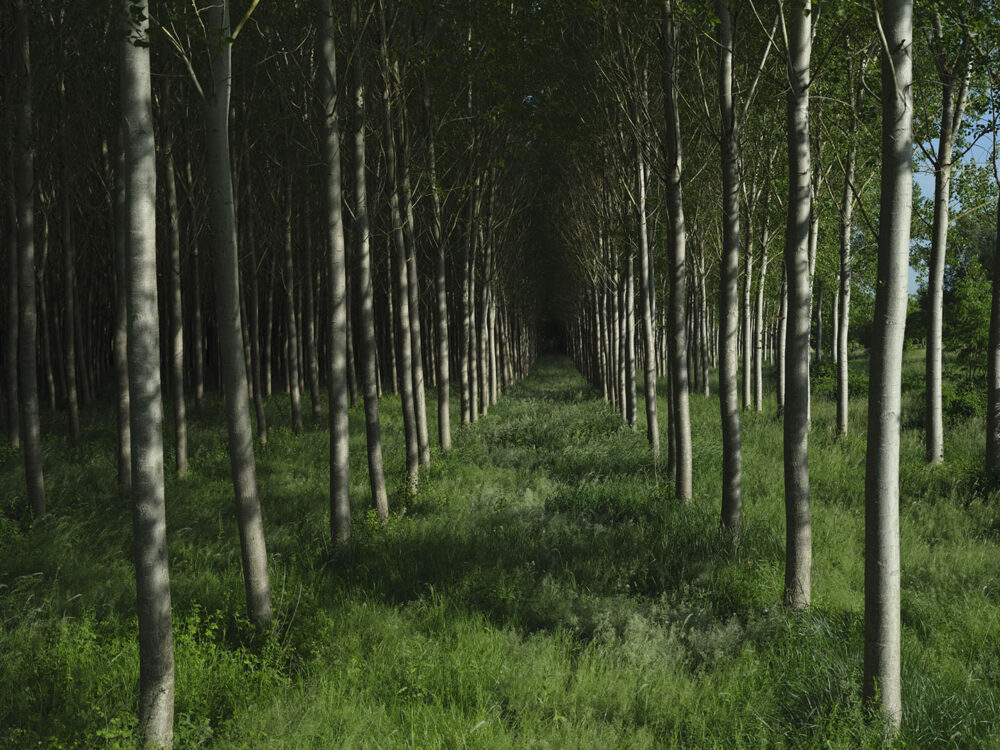
Rediscovering forests
Today, we can see the fault lines in mass tree planting’s promises of all things to all people, and how little impact they might have on biodiversity. Two-thirds of trees planted to capture carbon are monocrop plantations, usually of fast-growing timber or fruit trees, which have little chance of becoming the type of resilient ecosystems that the UN biodiversity framework is targeting. Worse, many trees planted simply die. If we succeed in planting one trillion trees, as three high-profile campaigns are demanding, our best guess, based on current methods and (extremely patchy) evidence, is that upwards of 500 billion might end up dead before maturity. Fred Pearce, author of A Trillion Trees: How We Can Reforest Our World, has documented how various Guinness World Record-smashing planting projects simply disappeared from the map, while nations like India have recorded little benefit to tree cover, despite planting millions.
Is this just the way of the world—after all, less than 1 in 10,000 acorns will end up a mature oak—or is there something fundamentally wrong? Holl says restoration can help minimize costs and maximize efficiency by developing a diverse toolkit of techniques driven by theoretical advances such as facilitation theory. “There’s not one right way to do this,” Holl says. She and collaborators are experimenting with planting dense strips of multiple species as well as Costa Rica’s clusters and urging new projects to simply observe the natural regeneration of flora for a few years before even picking up the shovel.
Suzanne Simard’s Mother Tree Project is likewise experimenting to find effective alternative methods for restoring logged land, focusing on the impact of preserving so-called mother trees, the largest and oldest trees, and their neighbors, with the goal of protecting biodiversity and accelerating forest recovery. Simard, a professor of forest ecology at the University of British Columbia in Vancouver, demonstrated that old forests are connected together by networks of mycorrhizae that pass nutrients between trees. These theories are already driving changes in restoration practice, with the Arlington, Virginia-based environmental organization the Nature Conservancy dousing seedlings in a “shroom juice” of mycorrhizal fungi, to jumpstart their connection to the underground web. In January, globe-spanning new research found that planting native soil microbiomes along with trees can accelerate plant growth by 64 percent.
Today, Indigenous peoples comprise only around 6 percent of the global population but protect 80 percent of biodiversity in the world.
While positive interactions have been sidelined by Western ecology, this has not been universal. The influence of Darwinism traveled with the empires in the 19th century, spreading competition theory far and wide as the ideal accompaniment to (and justification for) imperialism. The cultural bias of seeing nature as essentially antagonistic left little room for other points of view, says Bertness, which affected not only ecology but fields from medicine to social science. Recognition of interspecies cooperation has likewise been preserved in Indigenous practices, says Bertness, which drew on a history of mixed planting in examples like Milpa, a traditional intercropping system, where a dozen crops may be planted interspersed in a single field. Today, Indigenous peoples comprise only around 6 percent of the global population but protect 80 percent of biodiversity in the world. And across many countries such as China, multispecies planting has remained prevalent: rice paddy fields are shared with both fish and ducks, the animals feeding on pests and producing manure to fertilize the crops, among other benefits.
For Janice Lord, a plant evolutionary biologist at the University of Otago, New Zealand, the real dichotomy restoration faces today is between “industrial revolution-style minimal effect solutions,” like plantations, versus “multi-generational process- and relationship-oriented thinking.” In New Zealand, Indigenous-led restoration projects draw on both traditional knowledge and global innovations, including the Miyawaki Forest Method, a recent Japanese template for planting an area about the size of a tennis court with a dense collection of native woodland plants, and hugelkultur, a centuries-old German technique for creating raised beds from dead wood.
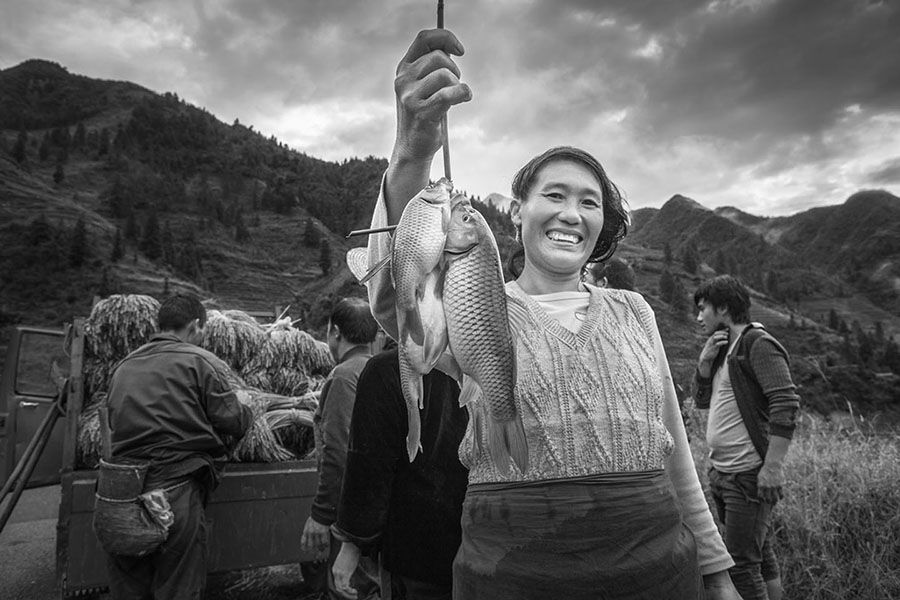
Artificial nature
But another, somewhat different, approach is increasingly popular: faking it. In Spain’s mine tailings, Navarro Cano has constructed pine log piles to mimic the nurse effect of shrubs. In Mexico’s drylands, artificial oaks give shade where real ones have vanished. And ersatz whale feces, made from fertilizing minerals and baked rice husks, is being tested to boost fish populations while drawing down oceanic carbon.
In May 2022, the Nature Conservancy opened a Coral Innovation Hub in St. Croix, one of the U.S. Virgin Islands, as a center for innovative approaches to coral conservation. There, Silliman is developing his facilitation-driven discoveries further, by layering natural and artificial means. In experiments with salt marshes, Silliman tested artificial root mats made from potato waste from chip factories, which secure seagrasses to the seabed in areas without other plants’ roots, plus “popsicles” of blood-like iron chelate fertilizer that help clear anoxia. But reefs offer even more unusual opportunities. Studies have shown that playing healthy reef sounds underwater can help degraded reefs recover by attracting aquatic species. “We’re trying to incorporate other facilitation effects, layering those,” says Silliman, including “sound facilitation, manipulation of the acoustic landscape.” He explains that “baby corals,” simple Cniderian organisms, don’t have ears, yet they can differentiate the sounds of a degraded reef from a healthy reef. “They like the sounds of snapping shrimp and fish,” says Silliman. “Isn’t that astonishing?”
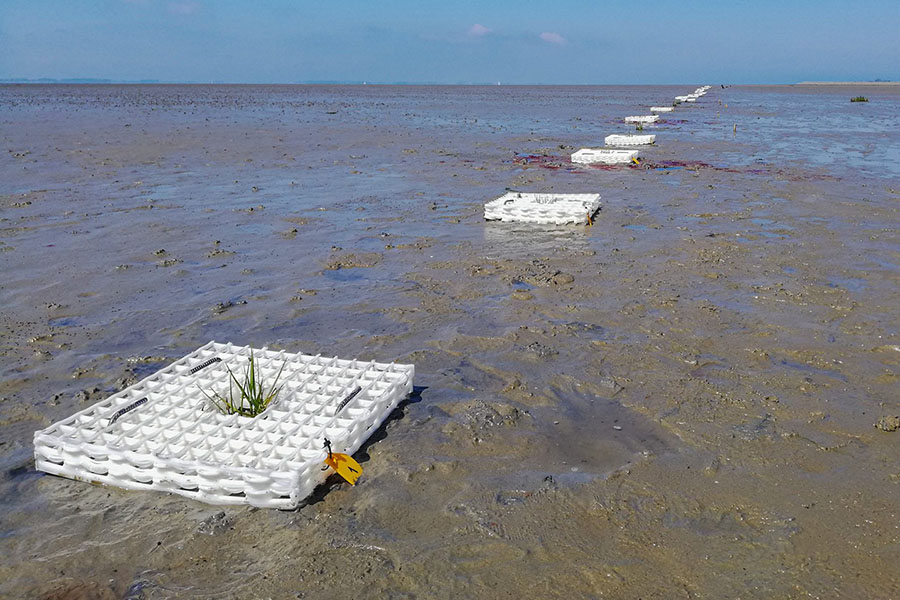
Such developments point to a further breakdown of the dichotomy between artificial and natural environments, dividing cities and wilderness, with human design playing a role not only in the physical structure of restored environments, but the dynamics of species interactions. “Technology is a key component,” says Silliman. “If we can mimic these positive interactions, then the great human creative mind can really aid us in working together—ecologists working with engineers—to come up with these contraptions” that will be cheap, biodegradable, and save the need for growing thousands upon thousands of living organisms in order to build self-sustaining communities.
This is not to say that ecological restoration has always excluded positive effects, says Jurgens. By planting marsh grasses like Spartina alterniflora as the main work of wetland restoration, practitioners are not simply hoping to return to find their plants had grown bigger but that these so-called foundation species can serve as the starting point for building whole communities. “Restoration is kind of doing this low-hanging-fruit thing, right?” she explains. “Oftentimes we’re relying on facilitation to finish the job that we started by just putting out a very strong facilitator.”
But thanks to facilitation research, the next generation of restoration will be equipped with an expanded arsenal, from blueprints for multispecies planting to solar-powered stereos playing reef sounds to baby corals. Yet hurdles remain to implementing even the most basic changes on the scale the COP15 framework sets out. Even slight changes like clustering propagules require frontline planters, often volunteers, to have more training than plantation-style schemes. Holl says many private landowners likewise prefer the more familiar, ordered look of the plantation. “The biggest obstacle is the social obstacle. One of the things we’ve found with landowners, over and over again, is that [it] looks messy,” she says. Overall, restoration remains a risk averse business, says Silliman, which keeps the old methods in play, even when they are inefficient. “They have something that kind of works and works a little bit so they’re okay with scaling that.”
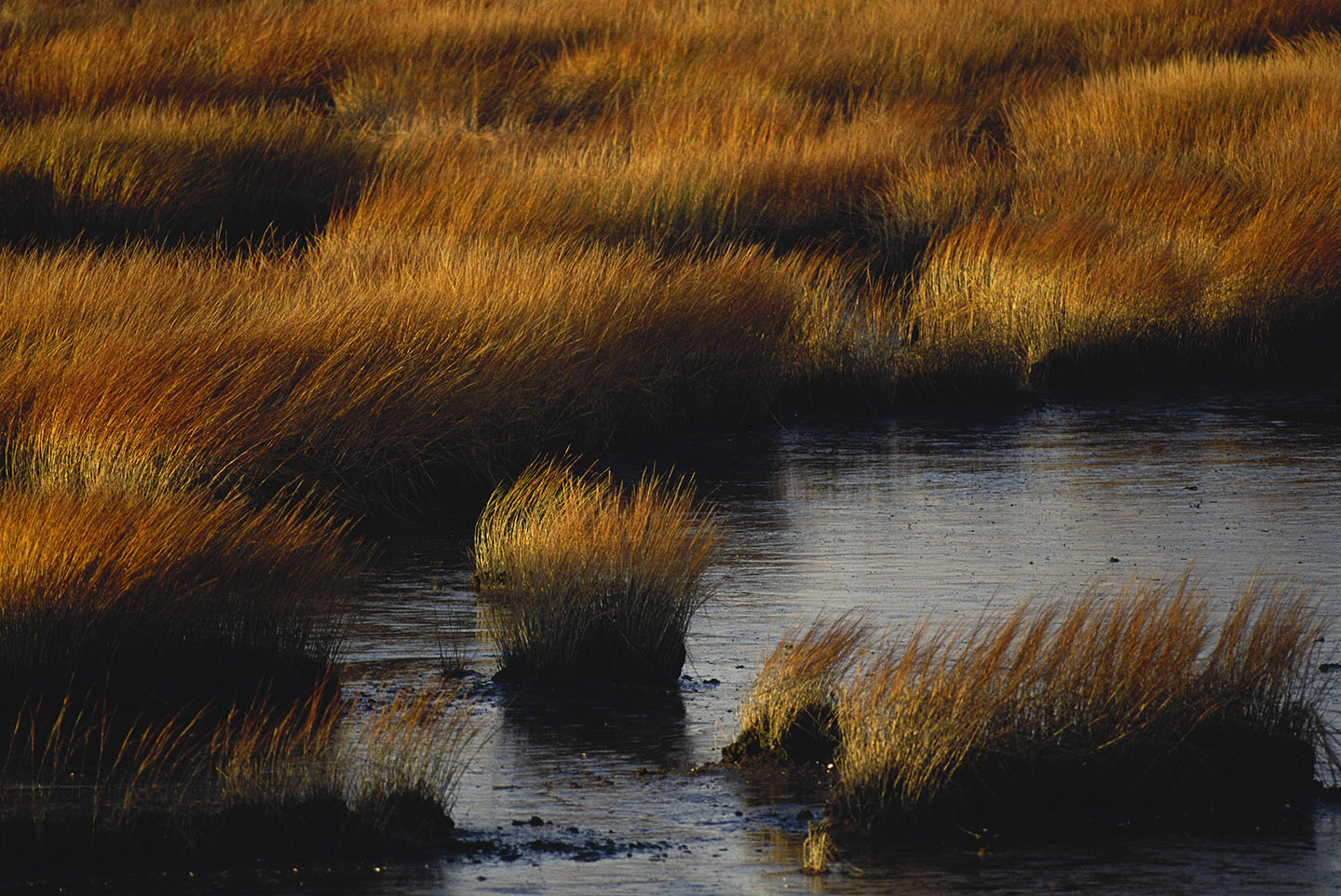
Yet, across the board, the most stubborn challenge remains the lack of belief in the power of facilitation effects, Bertness says. The entrenched idea that competition is the single, dominant force still “massively” affects how restoration is practiced. “This is the case whenever you get these dogmas that get stuck in science—that everybody believes in and they’ve spent their entire career banking on it—and it turns out to be totally wrong.” After three decades of work to change the mindset, new ecologists are coming through, who have learned facilitation theory since their arrival at college, he adds. “But who’s holding the purse strings? A lot of the old schoolers.”
Bertness remains optimistic that as facilitation effects become more familiar to the public, restoration will improve. He sees a critical mass building, with Simard’s “Wood Wide Web” making the front page of the New York Times Magazine in 2020, following on from the life’s work of Lynn Margulis, whose conception of endosymbiotic “co-evolution” is now the leading theory of where we all began—though some are now arguing that the idea is overblown. A recent article in the journal Nature demanded more evidence for some of the claims about forest networks that are fast entering the mainstream—another indication that the idea of cooperation as a guiding force of nature has become scarcely less controversial than when Bertness began arguing for it in the 1990s. Yet a groundswell of interest in interdependent natural processes is building, Bertness says, through biologist Mark Moffett’s work on ant cooperation, David Sloan Wilson’s work on the evolutionary role of altruism, to our now-everyday understanding of our gut’s microbiome in our health.
“Ecology is starting to understand that it really missed the boat in terms of the importance of interdependence,” reflects Bertness. “Across the board, whether you’re talking about the human body or you’re talking about salt marsh restoration or coral reef restoration or kelp restoration, you have to include cooperation and interdependence or you’re going to fail.”

